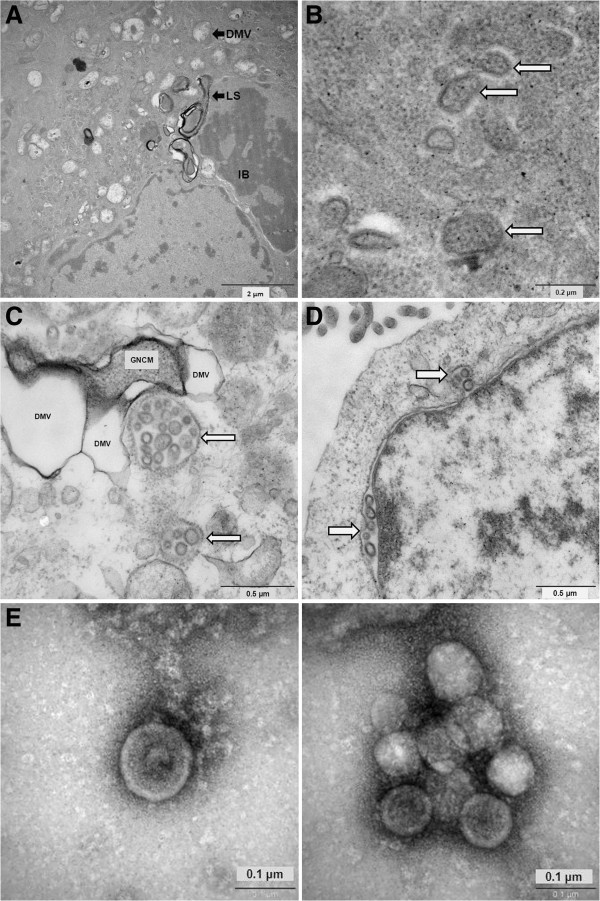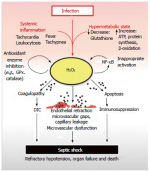gl69m
Member
Want to recreate this thread from the original LRF from 2020, and I had most of the posts archived on a word file but not all of them, I can get some of them from the Way Back Machine, here is the first few posts:
Post #1 (fromfiretown)
Post #2 (from Truthissweet)
Post #3 (fromfiretown)
Post #4 (from gl69m)
Post #5 (from Viking911)
Here is the CDC COVID-19 Alert No. 2 from March 24th 2020 (from the NVSS[National Vital Statistics System])
post #6 (fromfiretown)
post #7 (fromfiretown)
post #8 (fromfiretown)
post #9 (fromfiretown)
Post #10 (from Viking911)
post #11 (fromfiretown)
post #12 (fromfiretown)
post #13 (from gl69m)
Post #14 (from Viking 911)
post #15 (fromfiretown)
post #16 (fromfiretown)
post #17 (from Dude111)
post #18 (fromfiretown)
post #19 (from Dude111)
post #20 (fromfiretown)
post #21 (fromfiretown)
post #22 (from Orion67)
post #23 (fromfiretown)
post #24 (from Dude111)
post #25 (fromfiretown)
post #26 (from 2getherwestand)
Post #1 (from
Shame he never followed up on this really good question in this thread.If you have any facts not yet common knowledge or frequently overlooked, please post it. If you have questions, doubts, uncertainties, this is the thread to clear them up. Please limit responses to what is factual and what matters.
I will start:
FACT:
A large amount of people worldwide are dying due to being unable to receive medical care necessary to keep them alive.
QUESTION:
What percentage of those deaths are being attributed to COVID-19?
Post #2 (from Truthissweet)
Excellent facts there!FACT:
Pompeo 3/20 press conference and Governor Cuomo press conference about 2 weeks ago. Pompeo says live exercise and Cuomo says preparedness drill.
QUESTION:
Why is media not questioning this (we know why).
Post #3 (from
FACT:
The presumed outbreak began around the time of Chinese New Year when Chinese tourists travel the most. In Thailand for example: 1 Million Chinese visitors came for their New Year's celebration, 20,000 of them from Wuhan.
QUESTION:
Why did the total number of cases not exceed 100 until 2 months later?
Post #4 (from gl69m)
From firetown (post#1)
Quote:
"FACT:
If you have any facts not yet common knowledge or frequently overlooked, please post it. If you have questions, doubts, uncertainties, this is the thread to clear them up. Please limit responses to what is factual and what matters.
I will start:
FACT:
A large amount of people worldwide are dying due to being unable to receive medical care necessary to keep them alive.
QUESTION:
What percentage of those deaths are being attributed to COVID-19?
__________________
A large amount of people worldwide are dying due to being unable to receive medical care necessary to keep them alive."
This may well be a fact, but if we present this as "fact" to sheople without backing "evidence" to prove it is a fact, they will dismiss it as a "fact". Can you please put up at least three links to support each "fact" that may not be entirely obvious on the surface that they are "facts"? My request, not a demand.
From Truthissweet (post #2)
Quote:
Nice start from you Rob, thanks, right to the point. I'd say on the surface, sheople can not argue with this, but a follow up on sources would be necessary if they (sheople) query and were too lazy to look it up for themselves. But I myself would like to see a link/video we can show people of Cuomo's statements on camera about NYC being in a "preparedness drill". I have seen the video posted on Facebook by our mutual friend Jerry Lafreniere, but I haven't looked up a link for it yet.
FACT:
Pompeo 3/20 press conference and Governor Cuomo press conference about 2 weeks ago. Pompeo says live exercise and Cuomo says preparedness drill.
QUESTION:
Why is media not questioning this (we know why).
From Firetown (post #3),
Quote:
This seems to be more likely to be "fact" on the surface, better than the first post. But why are you not following up with your own question to find proof of that as to what's going on, particularly before you go onto another "fact"? Take this is as constructive criticism, the thread will be a lot better off and better supported with "evidence" and much more informative if you do that, thanks.
FACT:
The presumed outbreak began around the time of Chinese New Year when Chinese tourists travel the most. In Thailand for example: 1 Million Chinese visitors came for their New Year's celebration, 20,000 of them from Wuhan.
QUESTION:
Why did the total number of cases not exceed 100 until 2 months later?
Post #5 (from Viking911)
Not sure if the Henry Makow link works or not.QUESTION:
What percentage of those deaths are being attributed to COVID-19?
Only God know the answer to that question, as no clear instruction exist to pinpoint the course of death of Covid-19.
Covid-19 has been promoted by all means on death certificates, even
a person has not been tested positive for the specific Virus.
https://www.cdc.gov/nchs/data/nvss/c...-19-deaths.pdf

Better to read the notice here:
https://twitter.com/HenryMakow/statu...rymakow.com%2F
Here is the CDC COVID-19 Alert No. 2 from March 24th 2020 (from the NVSS[National Vital Statistics System])
I think there was a follow up to this that showed the U07.2 code was indeed being used on death certs with no actual 'covid' testing only clinical diagnosis with from symptoms primarily (or perhaps other imaging or lab findings too). Will have to dig for that one later.COVID-19 Alert No. 2 March 24, 2020
New ICD code introduced for COVID-19 deaths This email is to alert you that a newly-introduced ICD code has been implemented to accurately capture mortality data
for Coronavirus Disease 2019 (COVID-19) on death certificates.
Please read carefully and forward this email to the state statistical staff in your office who are involved in the
preparation of mortality data, as well as others who may receive questions when the data are released. What is the new code? The new ICD code for Coronavirus Disease 2019 (COVID-19) is U07.1, and below is how it will appear in formal tabular
list format.
U07.1 COVID-19
Excludes: Coronavirus infection, unspecified site (B34.2)
Severe acute respiratory syndrome [SARS], unspecified (U04.9)
The WHO has provided a second code, U07.2, for clinical or epidemiological diagnosis of COVID-19 where a
laboratory confirmation is inconclusive or not available. Because laboratory test results are not typically
reported on death certificates in the U.S., NCHS is not planning to implement U07.2 for mortality statistics. When will it be implemented? Immediately. Will COVID-19 be the underlying cause? The underlying cause depends upon what and where conditions are reported on the death certificate.
However, the rules for coding and selection of the underlying cause of death are expected to result in COVID-
19 being the underlying cause more often than not. What happens if certifiers report terms other than the suggested terms? If a death certificate reports coronavirus without identifying a specific strain or explicitly specifying that it is
not COVID-19, NCHS will ask the states to follow up to verify whether or not the coronavirus was COVID-19. As long as the phrase used indicates the 2019 coronavirus strain, NCHS expects to assign the new code.
However, it is preferable and more straightforward for certifiers to use the standard terminology (COVID-19). What happens if the terms reported on the death certificate indicate uncertainty?
If the death certificate reports terms such as “probable COVID-19” or “likely COVID-19,” these terms would be
assigned the new ICD code. It Is not likely that NCHS will follow up on these cases.
If “pending COVID-19 testing” is reported on the death certificate, this would be considered a pending record.
In this scenario, NCHS would expect to receive an updated record, since the code will likely result in R99. In
this case, NCHS will ask the states to follow up to verify if test results confirmed that the decedent had COVID-19. Do I need to make any changes at the jurisdictional level to accommodate the new ICD code? Not necessarily, but you will want to confirm that your systems and programs do not behave as if U07.1 is an
unknown code.
Should “COVID-19” be reported on the death certificate only with a confirmed test? COVID-19 should be reported on the death certificate for all decedents where the disease caused or is
assumed to have caused or contributed to death. Certifiers should include as much detail as possible based
on their knowledge of the case, medical records, laboratory testing, etc. If the decedent had other chronic
conditions such as COPD or asthma that may have also contributed, these conditions can be reported in Part II. (See attached Guidance for Certifying COVID-19 Deaths)
post #6 (from
The blood type study from China appears to have been somewhat confirmed by NYP.
COVID-19 and Blood Types: Higher Risk for Blood Type A, Lower Risk for Blood Type O (Chinese study)
The study from (NYP/CUIMC) shows similar results and in addition it also indicates a lower chance of dying for those with Rh(D) negative blood types:
COVID-19 deaths: 1 out of 45 Rh- and 1 out of 8 Rh+ patients (NYP/CUIMC)
Heat appears to also be a factor. Thailand and India may have had low numbers especially in the beginning due to that:
https://www.ncbi.nlm.nih.gov/pmc/articles/PMC7182516/
post #7 (from
Quote:
Sorry, but that would be catering to the types that don't benefit from this forum. If you need evidence that there are people in need of medical treatment, go back to Kindergarten and ask your teacher there. She will probably also explain to you that if people need treatment, but cannot get it, some of them may die.
Why 3?
Is that your magic/superstitious number? Do all your good things come in threes?
Request denied.
If you have something of value, you are welcome to post it.
Repeat: of value.
post #8 (from
Quote:
What happened to the quality of the forum?
You need help using Google?
Maybe some of your friends can teach you.
Stop trolling.
post #9 (from
Quote:
I don't trust HM. Do you?
Originally Posted by Viking911
QUESTION:
What percentage of those deaths are being attributed to COVID-19?
Only God know the answer to that question, as no clear instruction exist to pinpoint the course of death of Covid-19.
Covid-19 has been promoted by all means on death certificates, even
a person has not been tested positive for the specific Virus.
https://www.cdc.gov/nchs/data/nvss/c...-19-deaths.pdf

Better to read the notice here:
https://twitter.com/HenryMakow/statu...rymakow.com%2F
I guess I need to rephrase it:
If all people in the world were suddenly denied any type of medical treatment, what percentage of the population would pass away that otherwise wouldn't have within a month?
Post #10 (from Viking911)
Yes, I trust HM, but the news paper notice is from a Tony Parkinson, HM just
conveyed the message.
"I guess I need to rephrase it:" no you don't have to, as my answer was to
"What percentage of those deaths are being attributed to COVID-19?"
Perhaps you should just ask one question at a time and sort that out to avoid
getting confused.
post #11 (from
QUESTION:
Did the initial major spikes of deaths in Italy/Iran/USA/Spain take place before or after there were restrictions making it harder for people to receive medical care?
post #12 (from
Quote:
I'm not confused, but I am wondering why I should pay attention to controlled opposition. That seems to be a major source of confusion.
post #13 (from gl69m)
You know firetown, you sure as hell don't take constructive criticism worth a shit do you?
How about one, just one link for your "fact"??
"FACT:
A large amount of people worldwide are dying due to being unable to receive medical care necessary to keep them alive."
That is at least the minimum you should provide, like Viking911 did (post #5). That would be grand, awesome, marvelous, thanks very much;
Dickhead
And gosh dammit, follow up with your damn questions!! Just put the fucking information up here already, if you have any. Consider that a kindly request.
Stop the bullshit accusations of we're either trolling or stupid,
That's not a request.
Post #14 (from Viking 911)
I have no information, that Mr. Tony Parkinson should be controlled opposition, perhaps
you will share your knowledge with us, as you sound to be better informed.
P.S. It is a letter to the Editor at The Telegraph, UK on 1. May 2020.
Questions?
Should the first question not be "Do a new Virus called Covid19 actual exist?"
If the answer is yes, we can go on, if no, we are just wasting our time and should
concentrate of the consequences of this massive hoax.
post #15 (from
Quote:
It doesn't matter whether or not there is an old virus or a new virus.
What matters is what people are dying of.
post #16 (from
Bill Gates BBC Interview segment April 12th 2020
BG “And the thing that will get us back to the world that we had before corona virus is the vaccine and getting that out to all 7 billion people and we’ll need to fund about 10 the 10 most promising constructs because we won’t know in advance which one will prove to be safe and effective, and being effective for older peoples immune system is weak is a huge challenge. If you really amp up the vaccine to do that then you can run into safety issues. The people like myself and Tony Fauci are saying 18 months. If everything went perfectly, we could do slightly better than that but there will be a trade-off. We’ll have less safety testing than we typically would have and so governments will have to decide you know do they indemnify the companies and really say let’s, let’s go out with this ahh when it’s, we just don’t have the time to do what we normally do.”
Interviewer (IR)
IR So, as I understand it then what you’re saying is that it may be that there needs to be some compromise in some of the safety measures that normally be expected to create a vaccine because time is so crucial?
BG “Well of course if you want to wait and see if a side effect shows up 2 years later that takes 2 years so we will I think be able to get some safety indications but it, this is a public good and so you know those trade-offs, the governments working on a cooperative basis will be involved in a decision to say hey the regulators says go ahead even though you haven’t taken the normal time period”
Questions for analysis
1. Does Gates have a specific vaccine in mind?
2. Does he expect the vaccine to be safe without detrimental side effects?
3. Is there anything else within the language that is of interest to us?
“And the thing that will get us back to the world that we had before Corona Virus is the vaccine and getting that out to all 7 billion people,”
1. The subject (Bill Gates) identifies one thing that is needed to get us back. This is the vaccine. It is not, “what will get us back” or “the steps that will get us back” it is the vaccine. No other options are in the mind of the subject. Herd immunity is not a consideration in the perception of the subject, nor is any effective treatment protocol.
2. The subject uses the article “the” for a vaccine. This can be an indication of prior knowledge or his pre-accepted sole solution.
For example, if a shopkeeper reporting a robbery says “the man pulled the gun on me” it is an indication that the subject knew of the gun before it was pulled on him. This may mean he is an accomplice in the robbery. Articles are important indicators in Analysis.
What has caused the article “the” in the verbal perception of reality for the subject? The expected is “a vaccine”. At this point, the article “the” is an indicator that the subject has knowledge of a vaccine. Is this because there is one showing more promise than others, that he has in mind or does he know which one will be used? We do not know.
3. Can the article “the” be appropriate in that the subject is describing the cure to a specific virus? The Corona virus.
http://statement-analysis.blogspot.c...interview.html
post #17 (from Dude111)
Fuck gates and his stupid life altering vaccine crap!!!!!
Thats exactly what they want..... To scare people enough so they all get this crap injected into them.......
post #18 (from
post #19 (from Dude111)
Ya you dont.........
They have most people right where they want them now!!!!
post #20 (from
Quote:
Does it matter?
Originally Posted by Dude111
Ya you dont.........
They have most people right where they want them now!!!!
The populations are under-informed.
What exactly people are dying of can provide the answer to what is wondered quite frequently.
What the exact nature of the virus is can as well.
"It's all bullshit" is too general.
People want answers and don't seem to get them.
This is why I am here.
This is what I have started this thread for.
post #21 (from
And just to clarify:
Posting the analysis of this (only one) statement by Bill Gates is not meant as a rant about him.
It is to examine what is being planned. If more people get the idea of where we are going with all of this, a clearer picture might get painted encouraging the readers of this thread to look closer at and into what exactly it is that everybody is scared of.
post #22 (from Orion67)
My mother died in the hospital last weekend. She was living in an "assisted" home for the past year or so. She had advanced dimentia to the point where she didn't recognize her own kids. She apparently slipped and fell in her room and hit her head on something, resulting in a brain bleed.
They kept her on morphine at the ER for about 3 days while refusing to do anything about the bleed, and of course she died. Magically, she was marked down as a Covid casualty, although there was no such thing involved.
I plan to sue when things settle down a bit. We can't even hold a service without being fined or arrested for disorderly conduct of more than 2 people in the same room.
post #23 (from
Quote:
What reason were you given for the refusal?
post #24 (from Dude111)
I am so sorry Orison...... No your mom didnt die of "Covid"
I wish you luck when sueing and I hope you make a dent in this thing
post #25 (from
Of course, this is not confirmed, but someone recently told me that hospitals get 13k if the death is covid and 39k if it includes being placed on the ventilator?
Is that something credible any of you knows more about?
post #26 (from 2getherwestand)
My heart goes out to you Orion,sorry to hear of your loss.As for the lawsuit,all the way with a red hot poker friend.
Firetown,check this,
You Tube
Or watch it on Invidio here
https://www.invidio.us/watch?v=-1Kd4excEIk
And as to answer your question about the 12 or 13 grand and 39 grand being paid out,,,,really,serious????That's been out for awhile,and you never researched that to confirm if it's fact.
More and more doctors,nurses etc,etc, are coming forward and spilling the beans of the depth of this fraud.Hospitals are actually laying staff off in a lot of places because of a lack of customers.As for bill gates of hell,he should be made to be strapped down and injected with every vaccine the bastard ever pushed that damaged and killed the massive amounts of young children around the world.A bullet to the forehead would be too quick and painless for that ass clown.
__________________

























